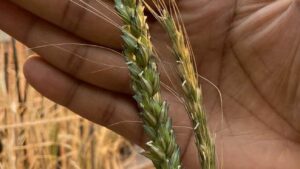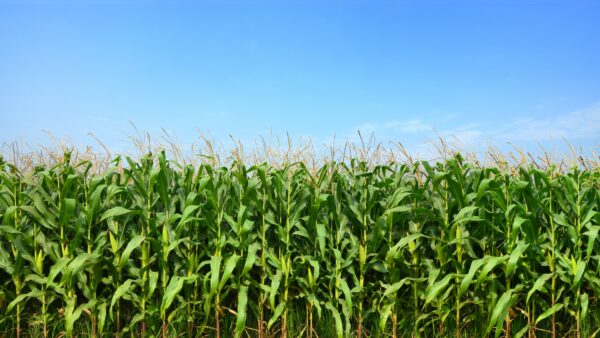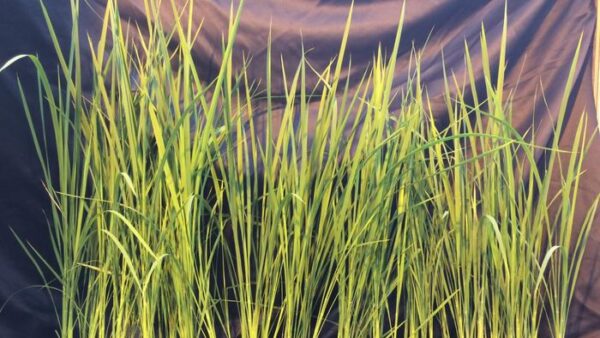Following the January 2016 announcement of the production of a whole genome assembly for bread wheat, the International Wheat Genome Sequencing Consortium (IWGSC), having completed quality control, is now making this breakthrough resource available for researchers via the IWGSC wheat sequence repository at URGI-INRA-Versailles, France.
Wheat breeders and scientists around the world will be able to download and use this invaluable new resource to accelerate crop improvement programs and wheat genomics research. The dataset will facilitate the identification of genes associated with important agricultural traits such as yield increase, stress response, and disease resistance and, ultimately, will make possible the production of improved wheat varieties for farmers.
Since the January announcement, the IWGSC project team has been fine-tuning the data so that the genome assembly released to the scientific community is of the highest quality possible. The resource released today – based on Illumina sequencing data assembled with NRGene’s DeNovoMAGICTM software – accurately represents more than 90 percent of the highly complex bread wheat genome, contains over 97 percent of known genes, and assigns the data to the 21 wheat chromosomes.
This data release represents the IWGSC continued effort to produce a “gold standard reference sequence” – the complete map of the entire genome that precisely positions all genes and other genomic structures along the 21 wheat chromosomes. The wheat genome is large – five times that of the human genome – and complex, with three sets of seven chromosomes.
“The IWGSC policy has always been to make all data publicly available as soon as they have passed the quality checks,” explained IWGSC Executive Director Kellye Eversole. “By doing so, the scientific community can start exploiting the data now while the Consortium progresses towards a gold standard reference sequence, anticipated to be released in 2017.”
Over the coming months, the IWGSC project team will continue its work towards completing a high quality, ordered sequence of the wheat genome that includes annotating and identifying the precise locations of genes, regulatory elements, and markers along the chromosomes, thereby providing invaluable tools for wheat breeders. The final result will integrate all genomic resources produced under the umbrella of the IWGSC over the last decade, including individual physical and genetic maps.
Wheat is the staple food for more than a third of the global human population and accounts for 20% of all calories consumed in the world. As the global population grows, so too does its dependence on wheat. To meet future demands of a projected world population of 9.6 billion by 2050, wheat productivity needs to increase by 1.6% each year. In order to preserve biodiversity, water, and nutrient resources, the majority of this increase has to be achieved via crop and trait improvement on land currently cultivated rather than committing new land to cultivation. As for other major crops, a well annotated reference genome sequence will be an invaluable resource towards this goal by providing the detailed maps of genes and gene-networks that can be improved through breeding.
About the IWGSC Whole Genome Assembly project
The whole genome assembly project is coordinated by the IWGSC and co-led by Nils Stein and Martin Mascher of IPK Gatersleben in Germany; Curtis Pozniak of the University of Saskatchewan’s Crop Development Centre and Andrew Sharpe of the University of Saskatchewan in Canada; Jesse Poland of Kansas State University in the United States; Frédéric Choulet of INRA, Clermont-Ferrand in France; Rudi Appels of Murdoch University and Gabriel Keeble-Gagnère of the Centre for AgriBioscience of the Government of Victoria in Australia; and Kellye Eversole and Jane Rogers of the IWGSC.
Project participants also include researchers from Illumina, Inc.; NRGene in Israel and the United States; and Tel Aviv University in Israel.
Funding for this project was provided by Genome Canada, Genome Prairie, Saskatchewan Ministry of Agriculture, the Saskatchewan and Alberta Wheat Development Commissions, and the Western Grains Research Foundation through the Canadian Triticum Applied Genomics (CTAG2) project; Kansas State University through the US National Science Foundation Plant Genome Research Program, the Kansas Wheat Commission; the German Federal Office for Agriculture and Food, the German Federal Ministry of Food and Agriculture; INRA, University Blaise Pascal; Illumina, Inc.; and the IWGSC sponsors.












